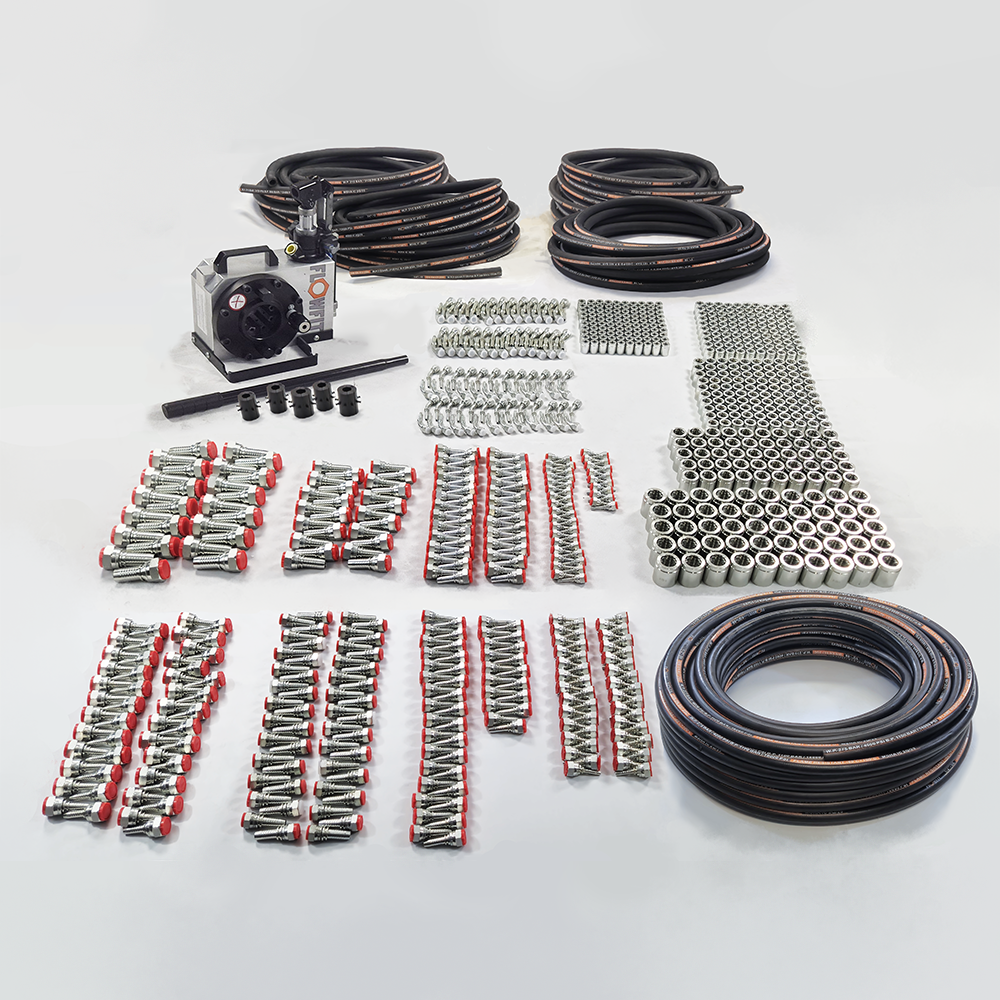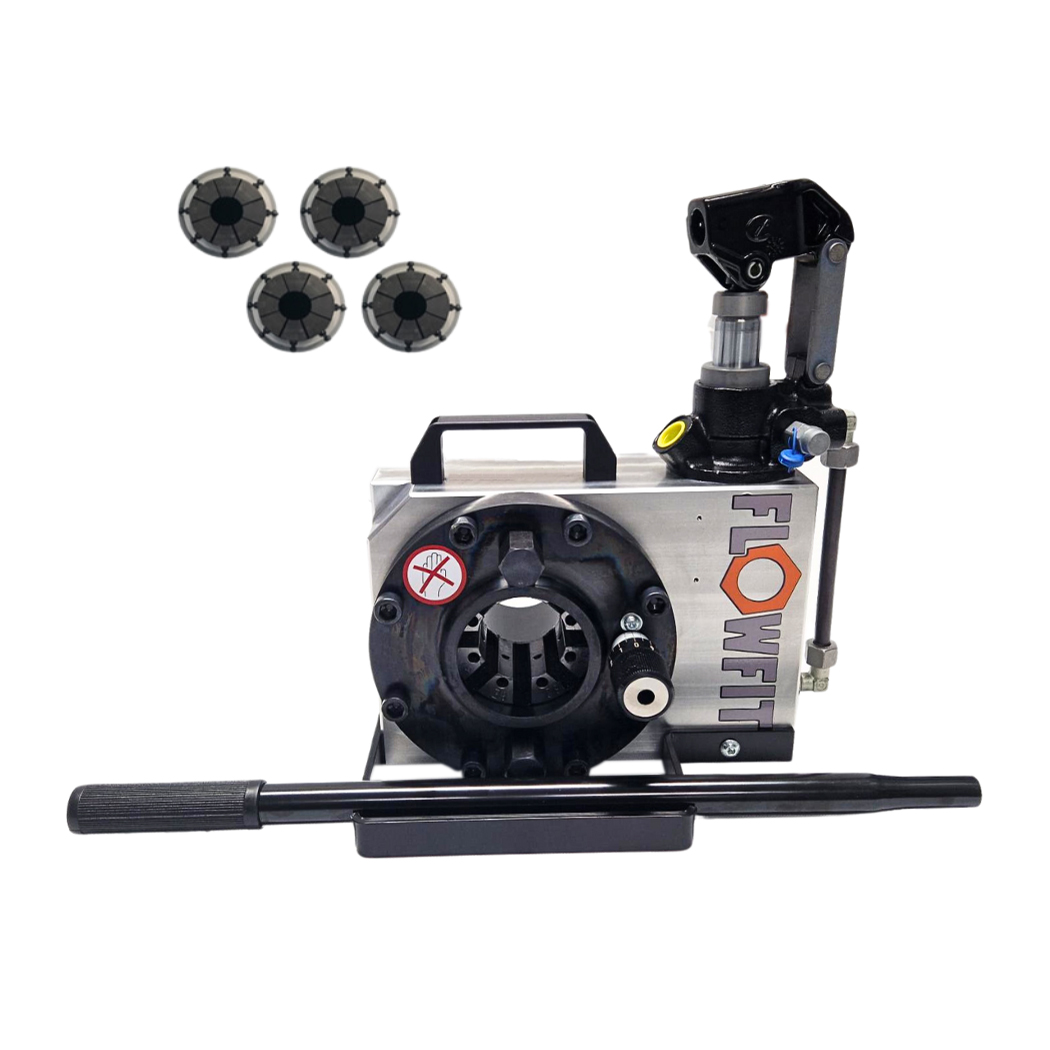The Ultimate 2024 Guide to Portable Hand-Operated Hose Crimpers
In the world of industrial and DIY applications, hose crimpers are indispensable tools. Whether you're working on hydraulic systems, automotive projects, or home maintenance, a reliable crimper ensures secure and leak-free connections. Among the various types available, portable hand-operated hose crimpers offer a unique blend of convenience, efficiency, and versatility. In this blog post, we’ll explore everything you need to know about these handy tools. We will focus primarily on hydraulic hose crimpers.

So What is a Portable Hand-Operated Hose Crimper?
We must first understand what a hose crimper is; a tool designed to crimp or join hoses with fittings, ensuring a tight and secure connection. Easy enough! These crimpers can be operated entirely by hand, which makes them highly versatile and easy to use in various settings, especially where electricity or heavy machinery isn't accessible.
What are the advantages of Portable Hand-Operated Hose Crimpers?
Portability
The most significant advantage is their portability. These crimpers can be easily transported to different job sites, making them ideal for fieldwork or remote locations.
Ease of Use
Hand-operated hose crimpers are straightforward to operate. They don't require extensive training or complex setups, making them accessible to novices and experts.
Cost-Effective
Without the need for power sources or expensive machinery, portable hand crimpers are a budget-friendly option. They are typically less expensive to purchase and maintain compared to their powered counterparts.
Reliability
With fewer moving parts and no reliance on external power, hand-operated crimpers are less prone to breakdowns and can operate in challenging environments.
Here are some key features to look for in portable hand crimpers.
When selecting a portable hand-operated hose crimper, consider these following features:
Crimping Capacity
Ensure the crimper can handle the hose sizes you typically work with. Most hand-operated models specify the range of hose diameters they can accommodate.
Durability
We only recommend crimpers made from high-quality materials like steel or aluminium to withstand the rigors of frequent use.
Ease of Adjustment
A good crimper should allow for easy adjustments to handle different fittings and hose types. Check for adjustable dies or interchangeable parts.
Ergonomics
Since these tools are hand-operated, comfort is crucial. Ergonomic handles and a lightweight design can reduce fatigue during extended use.
Accessories and Kits
Some models come with additional accessories or kits, including multiple dies, carrying cases, or calibration tools, adding to their versatility and value.
Top Uses for Portable Hand-Operated Hose Crimpers
Hydraulic Systems
Ensuring leak-free connections in hydraulic systems is critical. Portable crimpers are ideal for on-site repairs and maintenance.
Automotive Repairs
From brake lines to air conditioning hoses, hand-operated crimpers can handle various automotive hose needs.
Industrial Applications
In industries like manufacturing and construction, these crimpers are essential for maintaining pneumatic and hydraulic tools.
Emergency Repairs
Their portability and ease of use make them perfect for emergency repairs in remote or difficult-to-access locations.
Here are some tips for using a hand-operated hose crimper:
Preparation
Ensure the hose and fittings are clean and free from debris. Cut the hose end squarely for a better fit.
Die Selection
Choose the correct die for the hose and fitting size. Improper die selection can lead to poor crimping and potential leaks.
Consistent Pressure
Apply consistent pressure throughout the crimping process to ensure an even and secure connection.
Inspect the Crimp
After crimping, inspect the connection for any signs of unevenness or gaps. A properly crimped hose should have a uniform appearance.
Maintenance
Regularly clean and inspect your crimper for wear and tear. Lubricate moving parts to ensure smooth operation.
Conclusion
Portable hand-operated hose crimpers are a versatile, cost-effective, and reliable tool for a wide range of applications. Whether you're a professional in need of a portable solution for fieldwork or a DIY enthusiast looking for a handy tool for home projects, a hand-operated hose crimper is an excellent investment. By understanding their advantages, key features, and proper usage, you can make the most of this valuable tool and ensure secure, leak-free hose connections every time.
Ready to add a portable hand-operated hose crimper to your toolkit? Start by researching our selection of crimpers and choose one that meets your specific needs! With the right crimper in hand, you’ll be ready to tackle any hose-related task with confidence and ease.
If you are still not sure, contact us and we will be more than happy to help you.
The total one-stop supplier for hydraulic components & systems
Get in touch
Parys Road
Ludlow
Shropshire
SY8 1XY










